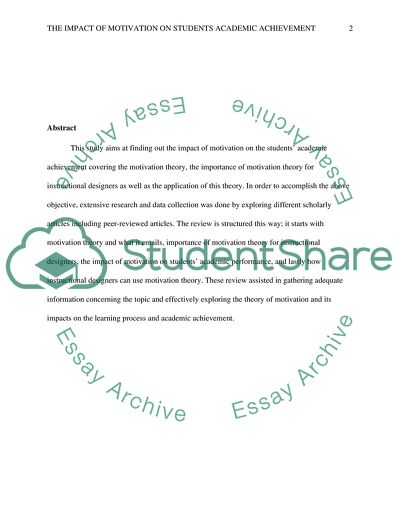Cite this document
(The Impact of Motivation on Students Academic Achievement Research Paper Example | Topics and Well Written Essays - 2500 words, n.d.)
The Impact of Motivation on Students Academic Achievement Research Paper Example | Topics and Well Written Essays - 2500 words. https://studentshare.org/education/1831919-the-impact-of-motivation-theory-on-students-academic-achievement
The Impact of Motivation on Students Academic Achievement Research Paper Example | Topics and Well Written Essays - 2500 words. https://studentshare.org/education/1831919-the-impact-of-motivation-theory-on-students-academic-achievement
(The Impact of Motivation on Students Academic Achievement Research Paper Example | Topics and Well Written Essays - 2500 Words)
The Impact of Motivation on Students Academic Achievement Research Paper Example | Topics and Well Written Essays - 2500 Words. https://studentshare.org/education/1831919-the-impact-of-motivation-theory-on-students-academic-achievement.
The Impact of Motivation on Students Academic Achievement Research Paper Example | Topics and Well Written Essays - 2500 Words. https://studentshare.org/education/1831919-the-impact-of-motivation-theory-on-students-academic-achievement.
“The Impact of Motivation on Students Academic Achievement Research Paper Example | Topics and Well Written Essays - 2500 Words”. https://studentshare.org/education/1831919-the-impact-of-motivation-theory-on-students-academic-achievement.


